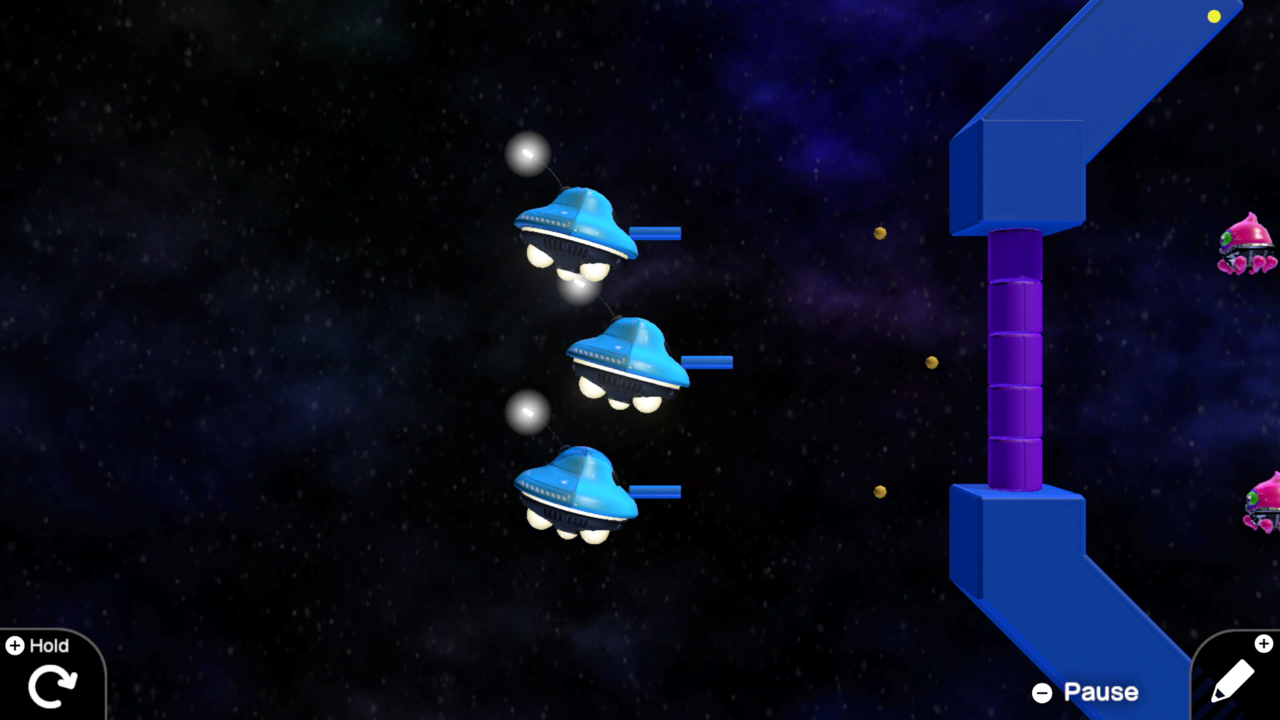While the signature attractions of Nintendo's Labo kits were the DIY peripherals you had to fashion out of cardboard, the most intriguing aspect of the software was the Toy-Con Garage. This ancillary mode let you tinker with the programming underpinning each mini-game and even allowed you to create small games of your own. Although Nintendo appears to have quietly retired the Labo line, the company is expanding the Toy-Con Garage into a standalone title called Game Builder Garage. We recently had a chance to see more of the game ahead of its release next month via a virtual preview event, and it looks to be a fairly flexible game creation tool.
Like the aforementioned Toy-Con Garage mode, Game Builder Garage allows you to "program" your own games by stringing together various input and output nodes. These nodes are personified as colorful, quirky characters called Nodon, and each type corresponds to a different aspect of the game; one Nodon represents the B button, for instance, while another controls the timer. By stringing these Nodon together, you can program different elements of your game. Connect a Stick Nodon to a Person Nodon, for example, and the character will walk around when the control stick is tilted.
Whereas the Toy-Con Garage was a freeform side mode, Game Builder Garage includes guided lessons designed by Nintendo's developers that illustrate what each Nodon does and how to string them together. These lessons effectively serve as Game Builder Garage's "story" mode. Each is broken into bite-sized, step-by-step tutorials led by a blue dot named Bob, and they'll ultimately teach you how to create one of the seven pre-made games included in the software.
Nintendo demonstrated the creation process with Alien Blaster, one of the seven aforementioned games. In this mini shoot-'em-up, you must guide a UFO through an autoscrolling course, blasting as many aliens as you can along the way. Each step of this lesson demonstrates how to put together a different aspect of the game; the portion we witnessed taught how to manually program the stage to autoscroll. According to Nintendo, you won't be able to deviate from these lessons; you'll need to follow the instructions exactly as they're presented to complete the lessons, but you'll have a chance to add your own spin to the games elsewhere in the software.
The aim of the guided lessons is ultimately to inspire you to take the knowledge you learned and employ it in the game's Free Programming mode. As its name suggests, this mode gives you free rein to program your own creations. Not only can you experiment with programming, but you can also customize other aspects of the game, such as the instrumentation and tempo of the background music. However, you'll largely rely on a pool of pre-made assets for the games you create, which makes Game Builder Garage more limited than something like, say, PS4's Dreams. Even so, the software still offers an impressive degree of flexibility and freedom in the kinds of small creations you can make. You can even use the software to create things beyond traditional games; the Nintendo rep brought up an idea to program a digital rattle that will make noise when you shake the Switch Joy-Con.

After your creation is complete, you'll be able to share it with other players either locally or by uploading them online, which will generate a code. To take advantage of the latter, however, you'll need to have a Nintendo Switch Online subscription, and unlike Super Mario Maker 2, there won't be an in-game hub (a la Course World) where you can browse all the games other players have uploaded; you'll need to know a code beforehand to be able to download it. Nintendo says this makes sharing creations feel more personal and encourages players to spread fun games they've tried by word of mouth. Not only can you play the games you've received from other players, but you can also look at and tinker with their programming, letting you see how the game was created and even add your own twist to them.
While we've only gotten a glimpse of Game Builder Garage, we're eager to try our hand at making our own games with it. Game Builder Garage releases for Nintendo Switch on June 11. The title retails for $30 and is available for preorder on the eShop and at various other retailers.











